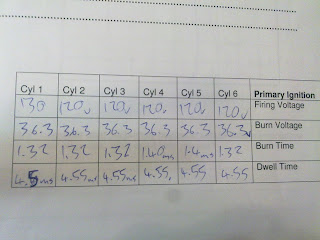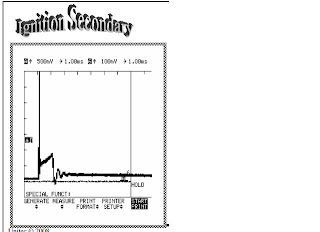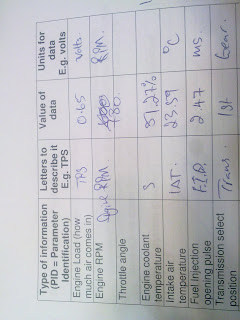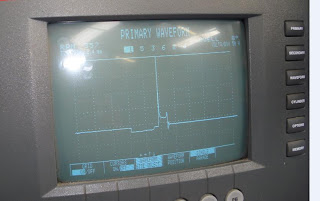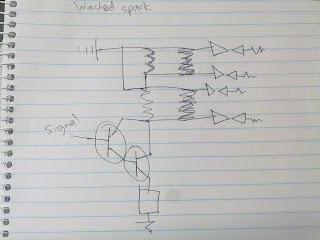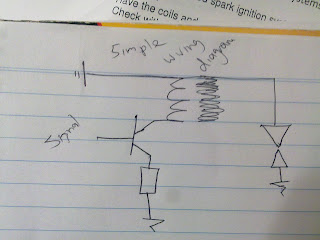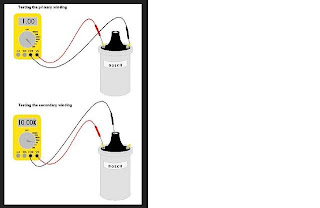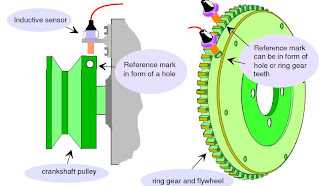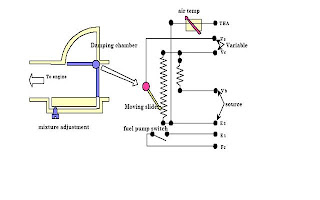mazda 323 wagon 2000
Engine idling: cold- CO= 5.8 HC= 521 CO2= 11.52 O2= .28
This is a rich mixture causing high CO there is too much fuel and some is unburnt causing high HC CO2 level is good for emissions but not the car and O2 levels are good indicating no oxygen in the exhaust.
Engine idling: warm- CO= 6.970 HC= 493 CO2= 10.78 O2= .19
The CO reading indicates low oxygen because the O2 level is low also the HC are low indicating fuel is getting burnt. The CO2 reading is good but bad 4 global warming.
Engine warm 2500rpm: CO= .4 HC= 123 CO2= 14.6 O2= .47
These are good readings. similar to idle so it indicates that even reving it the car still functions okay under load.
Idle lean mixture: CO= .07 HC= 230 CO2= 11.88 O2= 4.9
The CO reading tells us that its a lean mix because it matches up with the O2 indicating there is heaps of oxygen and a little bit high HC means some unburnt fuel but thats caused by too much oxygen and the flame cant get across.
Blipping idle: CO= 3.349 HC= 1188 CO2= 9.09 O2= 9.34
These readings are no good. The CO indicates too much fuel which should lead to a low oxygen reading but it doesnt indicating we have an air leak somewhere. Heaps of HC meaning fuel isnt getting burnt an the low CO2 is related to heapz of CO and O2 not joining together.
Disconnected 1 spark plug: CO= .157 HC= 2672 CO2= 7.28 O2= 11.03
The O2 and CO relate meaning this should be a lean mix but the HC levels are so high which means there is unburnt fuel. This is caused by the 1 spark plug not firing (weak spark) leaving unburnt fuel behind.
Disconnected injector harness: CO= .068 HC= 188 CO2= 6.94 O2= 11.72
With the 1 injector not functioning the CO show that there is not enough fuel (lean) the HC shows theres a lil unburnt fuel which maybe caused by all the extra oxygen
under load: CO= .550 HC= 195 CO2= 14.02 O2= 1.58
CO showz the mixture is a lil lean but the HC also tells us that most of the fuel is getting burnt and the O2 readings are good meaning theres no air leaks or extra air and the CO2 are good showing good emissions but bad for the economy

